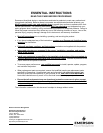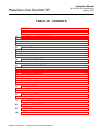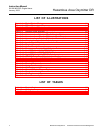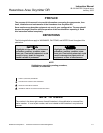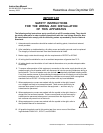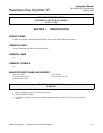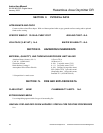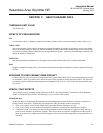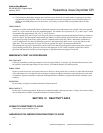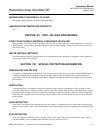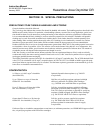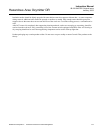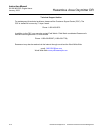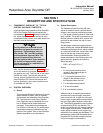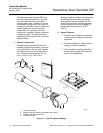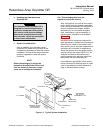
Instruction Manual
IB-106-340CDR Original Issue
January, 2002
P-6 Rosemount Analytical Inc. A Division of Emerson Process Management
Hazardous Area Oxymitter DR
4) Pleural plaques (thickening along the chest wall) have been observed in a small number of employees who had a
long duration of employment. There are several occupational and non-occupational causes for pleural plaque. It
should be noted that plaques are not “pre-cancer” nor are they associated with any measurable effect on lung
function.
TOXICOLOGY
A number of studies on the health effects of inhalation exposure of rats and hamsters are available. Rats were exposed
to RCF in a series of life-time nose-only inhalation studies. The animals were exposed to 30, 16, 9, and 3 mg/m
3
, which
corresponds with approximately 200, 150, 75, and 25 fibers/cc.
Animals exposed to 30 and 16 mg/m
3
were observed to have developed a pleural and parenchymal fibroses; animals ex-
posed to 9 mg/m
3
had developed a mild parenchymal fibrosis; animals exposed to the lowest dose were found to have
the response typically observed any time a material is inhaled into the deep lung. While a statistically significant in-
crease in lung tumors was observed following exposure to the highest dose, there was no excess lung cancers at the
other doses. Two rats exposed to 30 mg/m
3
and one rat exposed to 9 mg/m
3
developed masotheliomas.
The International Agency for Research on Cancer (IARC) reviewed the carcinogenicity data on man-made vitreous fi-
bers (including ceramic fiber, glasswool, rockwool, and slagwool) in 1987. IARC classified ceramic fiber, fibrous
glasswool and mineral wool (rockwool and slagwool) as possible human carcinogens (Group 2B).
EMERGENCY FIRST AID PROCEDURES
EYE CONTACT
Flush eyes immediately with large amounts of water for approximately 15 minutes. Eye lids should be held away from
the eyeball to insure thorough rinsing. Do not rub eyes. Get medical attention if irritation persists.
INHALATION
Remove person from source of exposure and move to fresh air. Some people may be sensitive to fiber induced irritation
of the respiratory tract. If symptoms such as shortness of breath, coughing, wheezing or chest pain develop, seek medi-
cal attention. If person experiences continued breathing difficulties, administer oxygen until medical assistance can be
rendered.
INGESTION
Do not induce vomiting. Get medical attention if irritation persists.
SKIN CONTACT
Do not rub or scratch exposed skin. Wash area of contact thoroughly with soap and water. Using a skin cream or lotion
after washing may be helpful. Get medical attention if irritation persists.
SECTION VI. REACTIVITY DATA
STABILITY/CONDITIONS TO AVOID
Stable under normal conditions of use.
HAZARDOUS POLYMERIZATION/CONDITIONS TO AVOID
N.A.



